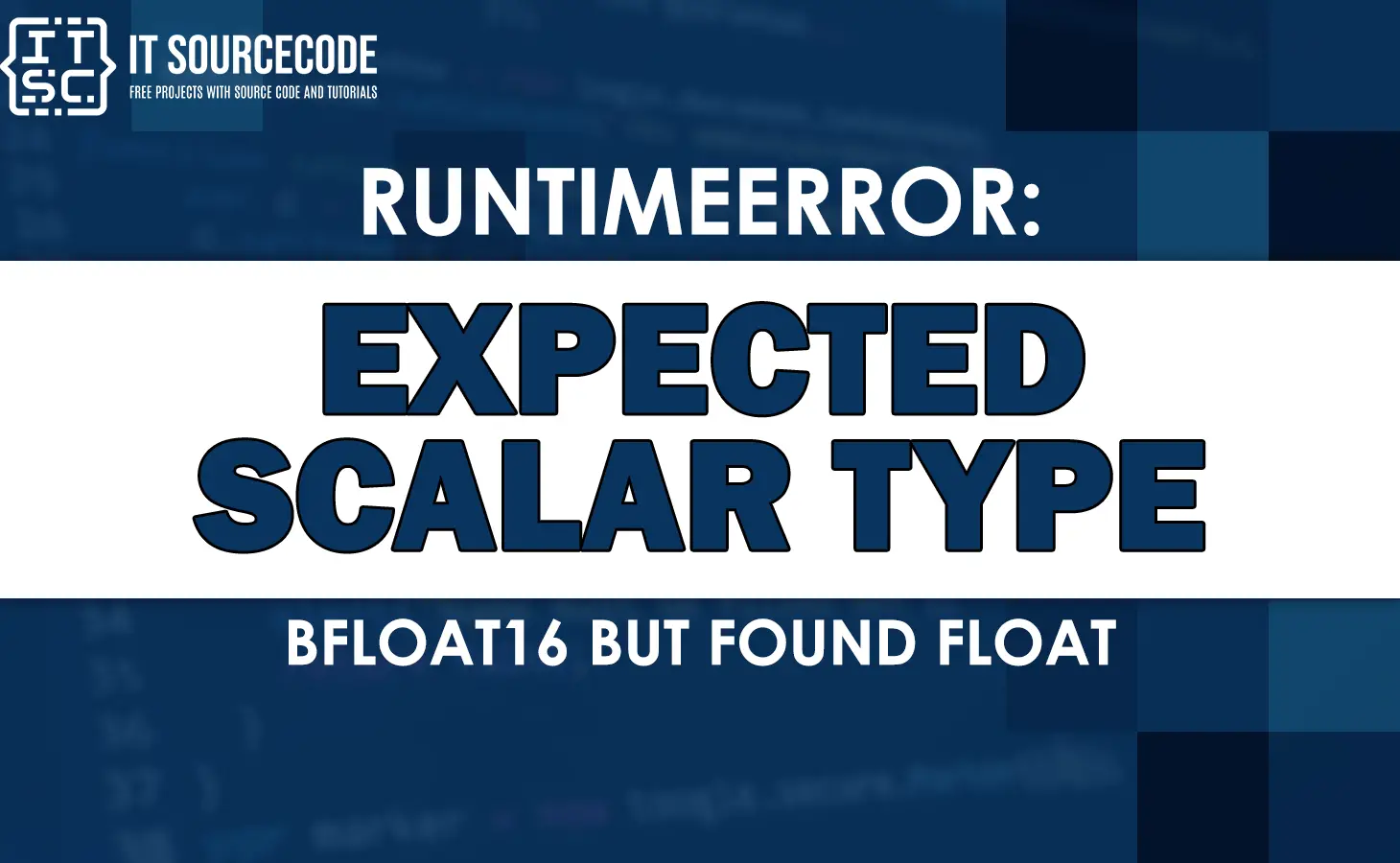One of the common errors may encounter of a programmer in working into deep learning frameworks such as PyTorch is:
Runtimeerror: expected scalar type bfloat16 but found float
This error typically occurs if there is a discrepancy between the expected data type, which is bfloat16, and the actual data type, which is float.
Possible Causes of the Error
Understanding the basic causes of the expected scalar type bfloat16 but found float is necessary for compelling to solve an issue.
Let’s discuss some common reasons that can lead to this error:
- Data Type Mismatch
- Incorrect Data Conversion
- Incompatible Libraries or Versions
- Tensor Data Type Mismatch
- Model or Function Expectations
Now that we have identified the possible common causes, let’s move on to some effective solutions to resolve this error.
How to Solve the Error?
Time needed: 4 minutes
The following are the solutions to solve the error Runtimeerror: expected scalar type bfloat16 but found float.
- Data Type Conversion
By using the data type conversion will be able to solve the error. Make sure that the input data type matches the expected data type.
Convert the data to bfloat16 using proper functions or casting methods available in your programming language or deep learning framework. - Update Libraries and Frameworks
Keep your deep learning framework, hardware drivers, and CUDA library up to date. Check for any new releases or patches that know compatibility issues. This step is necessary in maintaining a smooth workflow and minimizing errors.
- Check Model Architecture
Double-check your model architecture to make sure the consistency between the data types specified and the actual data being used. Make necessary adjustments if discrepancies are found.
- Review Tensor Operations
Carefully review the tensor operations in your code. Identify operations that require the bfloat16 data type explicitly and make sure they are being applied to tensors of the correct type.
- Explicit Casting
Convert the tensor’s scalar type to bfloat16 explicitly using the proper casting functions provided by the deep learning framework, such as torch.bfloat16() in PyTorch or tf.cast() in TensorFlow.
This is to make sure that the tensor is explicitly converted to the expected scalar type before performing operations. - Data Type Initialization
Double-check the initialization of tensors and make sure that they are initialized with the correct scalar type from the beginning. This helps maintain a scalar type consistency throughout the model.
- Framework Updates
Sometimes, the RuntimeError may occur due to a bug or compatibility issue within the deep learning framework itself.
In such cases, it is recommended to update the framework to the latest version, as newer releases often include bug fixes and improvements.
Working with bfloat16 in Python
When working with bfloat16 in Python, it is important to import the necessary libraries and make sure that your deep learning framework supports bfloat16 operations.
You can check the documentation and resources provided by the framework to learn more about using bfloat16 and its compatibility with different operations.
Additional Resources
- Runtimeerror: distributed package doesn’t have nccl built in
- Runtimeerror: context has already been set
- cuda error: all cuda-capable devices are busy or unavailable
- Runtimeerror: cudnn error: cudnn_status_mapping_error
- runtimeerror: either sqlalchemy_database_uri or sqlalchemy_binds must be set.
Conclusion
The RuntimeError: Expected Scalar Type bfloat16 but Found Float is a common error encountered by developers working with deep learning frameworks.
By following the provided solutions, such as explicit casting, proper data type initialization, data conversion, model inspection, and framework updates, Review Tensor Operations, you can prevent this error and ensure smooth execution of your deep learning models.
FAQs
You can use the type() function or the .dtype attribute to check the data type. For example, type(my_variable) or my_tensor.dtype will provide the data type information.
In frameworks like PyTorch or TensorFlow, you can typically use functions like torch.tensor(data).bfloat16() or tf.cast(data, tf.bfloat16) to convert data to bfloat16.
Yes, depending on your specific requirements, you can consider other data types like float16, float32, or float64. Each data type has its own trade-offs in terms of precision and memory usage.
Bfloat16 is a 16-bit floating-point format that balances precision and memory usage.
It is used in deep learning frameworks to reduce memory footprint and improve computational efficiency without sacrificing numerical precision.
Scalar type consistency ensures that tensor operations are applied correctly and efficiently. Mixing incompatible scalar types can lead to errors and inefficiencies in deep learning models.

